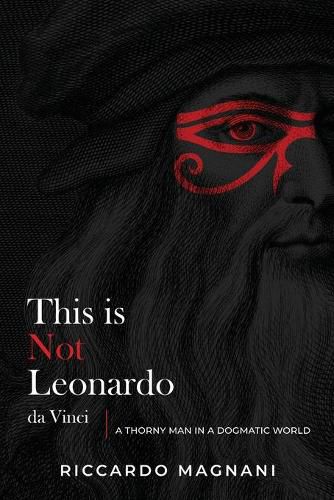Readings Newsletter
Become a Readings Member to make your shopping experience even easier.
Sign in or sign up for free!
You’re not far away from qualifying for FREE standard shipping within Australia
You’ve qualified for FREE standard shipping within Australia
The cart is loading…






This title is printed to order. This book may have been self-published. If so, we cannot guarantee the quality of the content. In the main most books will have gone through the editing process however some may not. We therefore suggest that you be aware of this before ordering this book. If in doubt check either the author or publisher’s details as we are unable to accept any returns unless they are faulty. Please contact us if you have any questions.
Despite so much being written about Leonardo da Vinci and the Renaissance, many questions about the Tuscan artist’s life and works remain shrouded in mystery:
Why isn’t the painting exhibited at the Louvre Museum the Mona Lisa? Why do we find so many pagan symbols in Leonardo’s Christian representations? Was Leonardo really the son of a notary and a slave? Why is there such a lack of work from Leonardo’s early life-perhaps his most important period? Why do we have paintings of the Americas well before the first trips of Christopher Columbus?
Riccardo Magnani, economist-turned-Leonardo expert, reconstructs the political and economic world around da Vinci, illustrating how he was influenced by the biggest discovery of all, the Americas.
This is not Leonardo provides the key to understanding Leonardo’s visual language, within the context of the Renaissance and its artists-essential to fully comprehend his work and the many clues he left behind.
Magnani reveals little-known facts about Leonardo’s education, long suppressed by the Catholic Church-from his use of iconography of the ancient Egyptians, Greeks and Byzantines, to his influence by the Neoplatonic movement led by George Gemistus.
Thanks to the new insights presented by This is not Leonardo, the dogmatic prism that our Western society has employed for so long to understand Leonardo da Vinci can now finally be challenged.
$9.00 standard shipping within Australia
FREE standard shipping within Australia for orders over $100.00
Express & International shipping calculated at checkout
This title is printed to order. This book may have been self-published. If so, we cannot guarantee the quality of the content. In the main most books will have gone through the editing process however some may not. We therefore suggest that you be aware of this before ordering this book. If in doubt check either the author or publisher’s details as we are unable to accept any returns unless they are faulty. Please contact us if you have any questions.
Despite so much being written about Leonardo da Vinci and the Renaissance, many questions about the Tuscan artist’s life and works remain shrouded in mystery:
Why isn’t the painting exhibited at the Louvre Museum the Mona Lisa? Why do we find so many pagan symbols in Leonardo’s Christian representations? Was Leonardo really the son of a notary and a slave? Why is there such a lack of work from Leonardo’s early life-perhaps his most important period? Why do we have paintings of the Americas well before the first trips of Christopher Columbus?
Riccardo Magnani, economist-turned-Leonardo expert, reconstructs the political and economic world around da Vinci, illustrating how he was influenced by the biggest discovery of all, the Americas.
This is not Leonardo provides the key to understanding Leonardo’s visual language, within the context of the Renaissance and its artists-essential to fully comprehend his work and the many clues he left behind.
Magnani reveals little-known facts about Leonardo’s education, long suppressed by the Catholic Church-from his use of iconography of the ancient Egyptians, Greeks and Byzantines, to his influence by the Neoplatonic movement led by George Gemistus.
Thanks to the new insights presented by This is not Leonardo, the dogmatic prism that our Western society has employed for so long to understand Leonardo da Vinci can now finally be challenged.